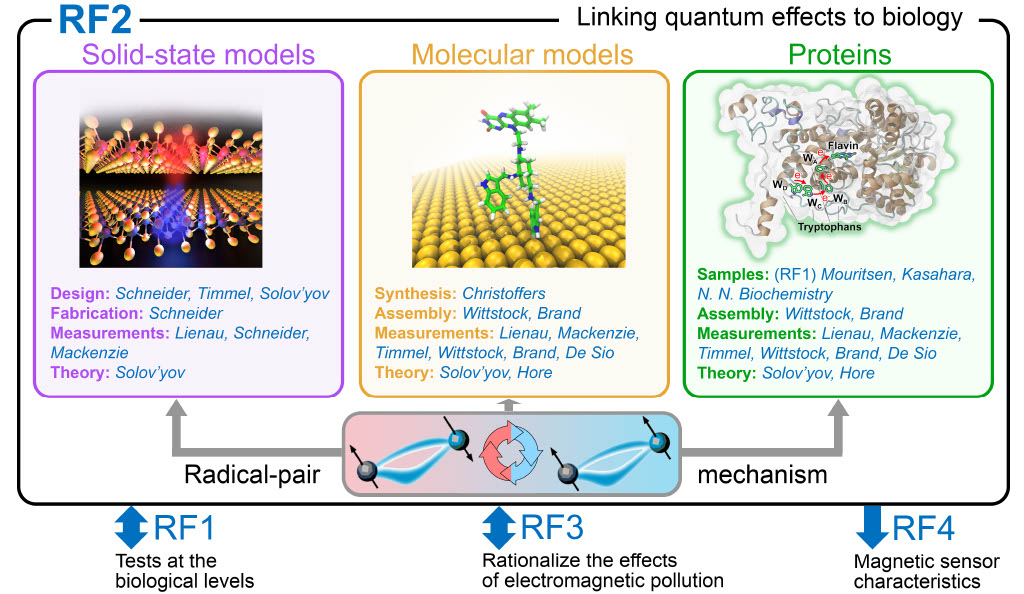In the past years, we found out that the magnetic compass of night-migratory songbirds is likely based on a quantum mechanical, electron spin based mechanism – the radical pair mechanism – in a cryptochrome protein to sense the Earth’s magnetic field at ambient temperature. In RF2, we will study how these quantum effects can affect processes at ambient temperature. In detail, we will investigate if we can demonstrate Earth strength magnetic field effects on the singlet-triplet spin dynamics of radical pairs in model systems inspired by cryptochromes, in cryptochrome proteins themselves and/or in related proteins. Further, we will address the question if quantum mechanical phenomena like quantum coherence, quantum correlations and quantum entanglement are essential components of biological functions such as magnetoreception in the warm, wet and noisy cellular environment. To answer these questions, we will work in solid-state and molecular models, proteins and we will use cutting-edge spectroscopic methods.
The society could benefit from the understanding of quantum sensing at ambient temperature. The quantum mechanisms underlying the magnetic compass of night-migratory songbirds rely on very similar laws of physics as some types of recently developed quantum technologies. However, most these only work at very low temperatures. If we can understand how these quantum mechanisms works in the wet, warm, noisy environment of a cell in a bird’s eye, this should have huge technological impact.
Involved fields of expertise: Computational physics, electrochemistry, laser spectroscopy and dynamics, organic chemistry, physical chemistry, quantum biology, quantum dynamics, quantum materials, quantum physics, spin chemistry and ultrafast optics.
Mainly involved PIs and Cooperation partners: Izabella Brand, Jens Christoffers, Christoph Lienau, Christian Schneider, Antonietta De Sio, Ilia Solov’yov, Gunther Wittstock, Christiane Timmel, Stuart Mackenzie, Peter Hore
Designated speaker of RF2: Ilia Solov’yov

